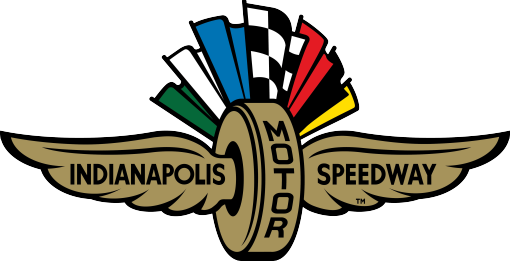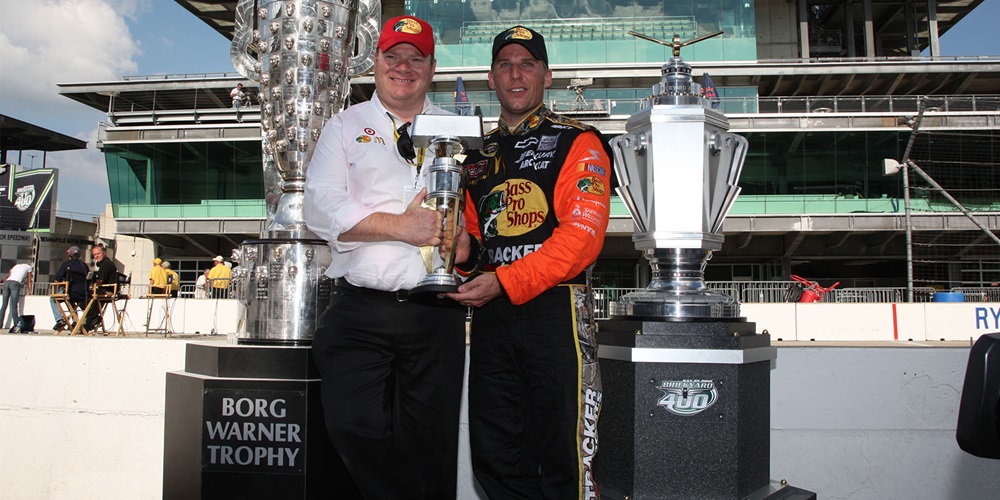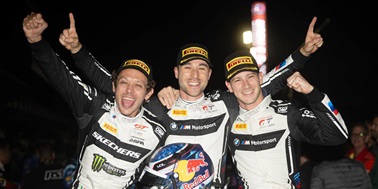This year, as the 2020 Big Machine Hand Sanitizer 400 Powered by Big Machine Records takes the green flag live at 4 p.m. Sunday, July 5 on NBC, race fans will wait to see who will write a new page of the NASCAR history books at the Indianapolis Motor Speedway.
As race fans watch 40 of the world’s best stock car racers take on the 111-year-old racetrack, they’ll think back to the iconic NASCAR moments that made them race fans. A racetrack with such a strong presence of history has many fond memories to cherish. This year, four iconic NASCAR at Indianapolis moments celebrate anniversaries in 2020.
From NASCAR legend Dale Earnhardt conquering Indianapolis in 1995 and Bobby Labonte’s stellar victory and championship season in 2000, to Hoosier native Tony Stewart’s emotional victory in 2005, Chip Ganassi Racing’s “Indy Double” in 2010 and many more in between, race fans have many great memories to celebrate this weekend.
Dale Earnhardt wins the 1995 Brickyard 400
Seven-time NASCAR Cup Series champion Dale Earnhardt wanted nothing more than to win the inaugural Brickyard 400 in 1994. After all, it did seem fitting that one of NASCAR’s all-time greats should win the first stock car race at the Racing Capital of the World.
In test sessions leading up to the race, Earnhardt even made a point to be the first NASCAR driver to lead a lap at Indianapolis. So, after starting second in the inaugural Brickyard 400, it was clear he was going to do all he could to lead the first lap.
“Yeah, that 1995 race did start in ’94,” Earnhardt’s crew chief Andy Petree said. “Dale Earnhardt really, really, really wanted to be the first NASCAR winner at Indianapolis Motor Speedway. You know, it meant a lot to him.”
But on Lap 2, Earnhardt pushed the car too hard and brushed the outside wall. The contact hurt his chances to compete for the win, let alone lead the race. In 1994, Earnhardt led one lap and finished fifth.
“Not winning the inaugural really got all over him,” Petree said. “That Gordon was the first winner, he did not like that. Nothing against Gordon, Earnhardt wanted to win that first Indy race. In 1995, we built a new car dedicated just for that race. That’s how bad he wanted to win.”
Earnhardt returned to Indianapolis the following year hungrier than ever for a Brickyard win. At that point in his career, Earnhardt had not won NASCAR’s most iconic race, the Daytona 500. Petree said that winning at Indianapolis was one of the biggest goals Earnhardt set for himself.
Earnhardt raced near the front all day after starting 13th in the second running of the race, but he never outright dominated the day. Just when it seemed that the second Brickyard 400 would go to Bill Elliott or Rusty Wallace, Earnhardt turned up the heat late in the race.
Earnhardt took the lead for the first time on Lap 133 of 160 and never looked back. “The Intimidator,” “The Man in Black,” the driver of the iconic black No. 3 Chevrolet cruised to Victory Circle at the world’s most historic racetrack 25 years ago.
While celebrating with his family in his post-race interview, he uttered some of the most famous, and funniest, words in Indy’s Victory Circle, taking a jab at young, polished phenom Jeff Gordon, who won the inaugural Brickyard 400 to the rough-and-tumble Earnhardt’s dismay.
“I’m glad I’m the second man that won,” Earnhardt said, “if not the first.”
Labonte Scores Dream Victory at Indianapolis in 2000
The 2000 Big Machine Hand Sanitizer 400 Powered by Big Machine Records was singing a familiar tune: Rusty Wallace was in control at the Indianapolis Motor Speedway and seemed destined to finally win a race that eluded him for so long.
However, not far behind Wallace all day long in the seventh edition of the already iconic NASCAR race at Indianapolis Motor Speedway was Bobby Labonte, driver of the bright green No. 18 Interstate Batteries Pontiac for Joe Gibbs Racing.
For most of the second half of the race, Labonte was never more than half a second behind Wallace’s blue and white No. 2 Ford. The field cycled through green flag pit stops with less than 40 laps to go and set up a sprint to the checkered flag and the opportunity to Kiss the Bricks.
During that final run to the finish, Labonte said he knew he couldn’t pass Wallace on his own. Wallace had the speed on the straightaways, while Labonte was quicker in the corners. With track position being so important, Labonte knew it was going to take a mistake for him to get the lead.
With 15 laps to go, Labonte cued the radio to talk to his crew.
“Man, I don’t know if I can catch him,” he said to crew chief Jimmy Makar while heading into Turn 3. “Wait. Hold on a second…”
Wallace slipped up entering Turn 3.
Labonte had his chance – and took it. He dove to the inside of Wallace, and they raced side-by-side through the North Short Chute and through Turn 4. Down the frontstretch, Wallace had a slight advantage over Labonte.
Then there was contact.
Labonte’s right front tapped Wallace’s left rear. The touch was enough to pull Wallace back a bit, and Labonte had the momentum again down the frontstretch. By the time they got to Turn 1, Labonte was clear, with no looking back.
Within a lap, Labonte put one second between his Interstate Batteries Pontiac and Wallace’s Miller Lite Ford. To use one of Wallace’s famed broadcasting phrases, Labonte was flat flying.
The speed Labonte showed at the end of that race 20 years ago was no surprise to him. He insists to this day that machine was the best race car he’s driven. Ever.
“I had never felt that good about a race car in all the years I raced,” he said. “I won races, but not like that. That car just seemed like it was perfect. I just had something that day that was so good. Leading up to it and going to bed the night before, I had never felt that good about a car. I always felt good, but I didn’t have that much confidence.”
Tony Stewart’s Indianapolis Dream Comes True in 2005
Fifteen years ago, Columbus, Indiana, native Tony Stewart finally achieved a lifelong goal: Winning at the Indianapolis Motor Speedway.
Stewart, a veteran open-wheel driver and 1996-97 INDYCAR season champion, always had his sights set on the Indianapolis 500 while growing up racing on the United States Auto Club tour.
“You dream about something for so long, you become consumed by it,” Stewart said. “When I was in USAC trying to make a living as a race car driver, I drove a tow truck for a guy I raced sprint cars against. I would drive down Georgetown toward 16th Street, parallel with the frontstretch, and wonder what it would be like 300 feet to the left running 200 mph.”
Stewart got his chance to understand what it was like as he raced in the “500” five times between 1996 and 2001. He started first in 1996 and scored a best finish of fifth in 1997. Still, victory at his beloved Indianapolis Motor Speedway eluded him as he made the transition to NASCAR.
Stewart competed in his first full-time NASCAR Cup Series season in 1999 at age 28. In his first race back at IMS, he finished seventh, and he followed it in 2000 with a fifth-place finish while teammate Bobby Labonte scored the win Stewart wanted so badly.
Stewart would lead many laps in the following few years – 106 to be exact – but he always found himself watching the ceremonial kissing of the bricks from pit road.
Then, in 2005, the question of if Stewart would ever be able to score a win at the track just 50 miles from his childhood home was answered when he led a race-high 44 laps and beat fellow USAC star Kasey Kahne by .794 of a second in one of the most joyous and emotional Brickyard wins in NASCAR history.
“Finally, after years of trying to win, be it in Indy cars or stock cars, I got to know what it feels like, to see that view coming down the front straightaway, seeing the checkered flag and knowing that I was the first driver to cross the stripe, versus the second, third or fourth-place guy,” Stewart said of his emotional win. “I had wanted that moment for so long, and I finally got it.”
Few who watched the 12th Big Machine Hand Sanitizer 400 on television could forget Stewart’s father, Nelson Stewart, hanging over the railing in the Turn 2 Suites and pointing his index finger at his temple, encouraging his son to keep a cool head in the final charge to the Yard of Bricks.
And no one forgot the post-race scene, when Stewart stopped his No. 20 Home Depot Chevrolet in front of the Turn 2 suites, took a swig from a can of Coca-Cola from a fan and saluted his friends and family.
Then, Stewart took the party back to the main straightaway and joined the race fans that had cheered him on to this iconic finish. He memorably laid on the outer wall to do his NBC interview, exhausted from the challenge Indianapolis presents to a driver. After recouping his energy, he climbed the front stretch fence in another memorable celebration with his Joe Gibbs Racing crew.
“You don’t get anything easy at Indianapolis,” Stewart said. “You have to earn it, and if you’re off, you’re not going to win. You can’t make something happen there that isn’t supposed to happen. So, if it’s your day, it’s going to be your day, and if you’re off, you’re not going to make it your day by trying harder. You just have to have everything right. It has to be right.”
McMurray Sweeps Crown Jewels, Ganassi Sweeps Indianapolis in 2010
2010 will always be remembered as the year of Chip Ganassi Racing within the motorsports world.
The year started in a big way for Ganassi as Jamie McMurray won the Daytona 500 in his No. 1 Chip Ganassi Racing Chevrolet. The win was Ganassi’s first win in NASCAR’s biggest race and an emotional one for McMurray, who had never won a race of this stature.
Then, the owner of one of the most successful NTT INDYCAR SERIES teams arrived at the Indianapolis Motor Speedway in May looking to become the first owner to win both the Daytona 500 and the Indianapolis 500 in the same season.
He accomplished that feat thanks to a stellar drive from Dario Franchitti, who led 155 laps in a convincing win for Ganassi.
Then, July rolled around, and Ganassi had his sights set on another unprecedented feat: To win the Daytona 500, the Indianapolis 500 and the Brickyard 400 all in the season. No team owner had ever swept Indianapolis’ two biggest races, let alone three of the biggest in North America.
McMurray, in what was a career season, took advantage of the misfortunes of his Ganassi teammate Juan Pablo Montoya and held off Kevin Harvick late in the race to win the 17th edition of the famed NASCAR race and give Ganassi the unparalleled honor of becoming the first owner to sweep the Racing Capital of the World.
McMurray said winning two of NASCAR’s biggest races in the same season is something he couldn’t properly appreciate in the moment, but as time goes on, his appreciation grows bigger.
“Indianapolis was really cool, and when you win those big races at the time it doesn’t seem as big as it is right now,” McMurray said. “When you win those big races like the Daytona 500 and the Brickyard 400, at the time it’s not as big as it is now when you look back at how hard it is to win again. It makes you appreciate what you really had in the past.”
With the win, McMurray joined Dale Jarrett and Jimmie Johnson as the only drivers to achieve that elite NASCAR “double” in the same season by winning the Daytona 500 and the Brickyard 400 in the same season.
McMurray added that conquering Indianapolis, which is such a challenging racetrack with four distinct straightaways and four distinct turns, makes the accomplishment that much sweeter. After all, this is a race that has helped crown the NASCAR Cup Series champion in nine different seasons.
“To win the Brickyard is a huge accomplishment,” he said. “It’s different than winning at Daytona, because at Daytona, superspeedway racing is just so different. You don’t see average guys win at Indy or Charlotte. That’s just not the way it works. To be able to win that race was huge.”




